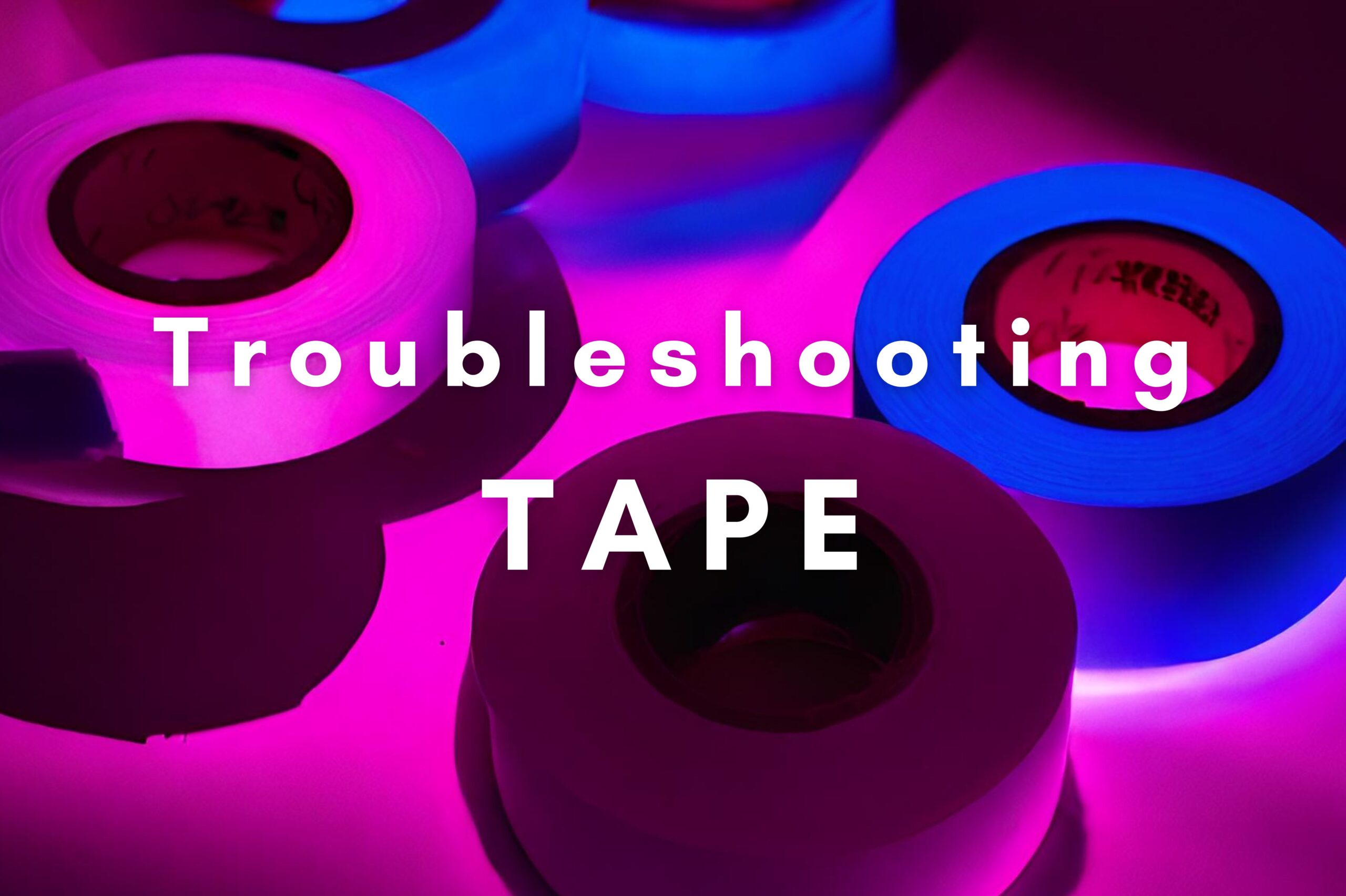Sticky Tape not sticky? Or is your black/yellow tape peeling up at the sides? If you’ve arrived on this page, it can only mean one thing – you’re having tape troubles!
We’ve compiled this guide of helpful tips and tricks to troubleshoot your tape turmoils.
Are you using the best tape for your packing operation?
In this guide, we will explore the reasons your tape may not be performing as it should. There are lots of reasons this could be, from expired tape to incorrect tape for the job.
The best way to ensure you are using the best tape for the job is to book your Free Springpack Packaging Review. Our team of packaging experts are available Monday to Friday to visit you and make sure the tape you are using is perfect for the job.
Has the tape perished over time?
Did you know, that tape can expire? If you’ve used the tape before and it has worked as expected, there is a potential that your tape has perished over time. All tapes can go bad for a number of reasons, including UV exposure, incorrect storage and age of the roll.
A great way to ensure your tape does not perish before depletion is to rotate your existing stocks and to run as lean as possible.
At Springpack, we provide stock holding and next-day shipping throughout the UK, ensuring that your tape supply never depletes or expires.
Incorrect Surfaces
The surface you are applying the tape to is important, too!
Whilst many tapes are incredibly versatile, some will not perform as well as their alternatives. A Vinyl tape with a solvent adhesive is much more suitable for cold storage than
Using a low tack tape such as masking tape to seal a cardboard box for export will not be as effective as using packing tape. Instead, using a strong parcel tape, such as Reelbond Pro, would be more appropriate.
Tape Splitting During Use
The leading cause for your tape splitting is the adhesive has started to degrade the backing film.
Tapes made with a lesser-quality backing film have a quicker rate of degradation than those of a higher-quality, thicker adhesive layer.
Deterioration of the film can also be caused by damp and cold. We recommend storing your tape at a controlled temperature, as recommended by your tape supplier.
Your tape can also split if it is not being used on a dispenser, and is being torn/bitten, instead of cutting.
Can’t get the tape off the Dispenser/Tape gun
Most Tape Dispensers have a screw to hold the tension. If the tape is not coming out from the tape gun properly, it is usually due to having too much tension on the tape.
Low Noise Tape
If you are using a Low Noise Tape – it is easy to assume you should use a Low Noise Tape Gun, too!
Low noise tapes work by being slowly released from the roll. Low Noise Tape Dispensers work by slowly releasing the tape.
Using a Low Noise Tape with a Low Noise Tape Dispenser can lead to poor/slow performance.
User Error
User error is a very common reason why tape is failing.
If the user has touched the adhesive layer on the tape, the natural oils on their hands will cause the tape to be less effective.
After application, it is always good practice to ensure the tape has been pressed down correctly and is firmly adhered to the box. In the case of Hot Melt adhesive tapes, it is vital. Though hot melt has a high initial tack, the adhesive is not fully activated until it has been pressed down.
To learn more about Hot Melt, Acrylic and Solvent Adhesives, why not read our guide on the different types of tape?
Gummed paper tape for example, is only activated when the gummed side has been moistened. Failing to moisten Gummed Tape will result in the adhesive not sticking correctly, or at all.
Application Temperature for Tape
Most standard tapes are not intended to be applied in cold or hot temperatures, applying tape when the tape is hot/cold may result in poor adhesion, and the tape becoming brittle.
As every tape is different, we recommend contacting your packaging supplier to learn the optimal temperature your tape should be applied at.
Taping Uneven Surfaces
Most tapes will not adhere to highly textured surfaces, as there is not enough surface area to stick to.
Using Recycled Cardboard
Some tapes may not adhere well to recycled cardboard.
This is because recycled cardboard can have small fibres on the surface. These fibres can easily break away, removing the bond with the tape. If you are using a Recycled Content Cardboard, we recommend switching to a tape designed to be used with a Recycled Cardboard.
Not Applying to a Clean and Dry Surface
Tape will not stick well to dirty, oily or wet surfaces.
For best results, only apply tape to clean and dry surfaces.
UV Exposure
Tape that has been kept in direct sunlight will deteriorate quicker than tape stored in controlled conditions. UV Damage can cause tapes to become brittle, hard and peel.
Instead, store your tape away from sources of heat and light.
Under Filled Boxes
Using a box that is too big and doesn’t have enough void fill means there will not be enough structural integrity in the box for the tape to press against, and therefore adhere to smoothly.
Instead, ensure your boxes are filled correctly, so the tape can be applied with consistent force against it.
Springpack Packaging Review
Where to buy Packaging Materials Near Me?
If you’re looking to purchase packaging tapes such as brown box tape, eco-friendly tape or tape for hazard marking, why not get a quote from Springpack? We offer nationwide next-working-day delivery.








